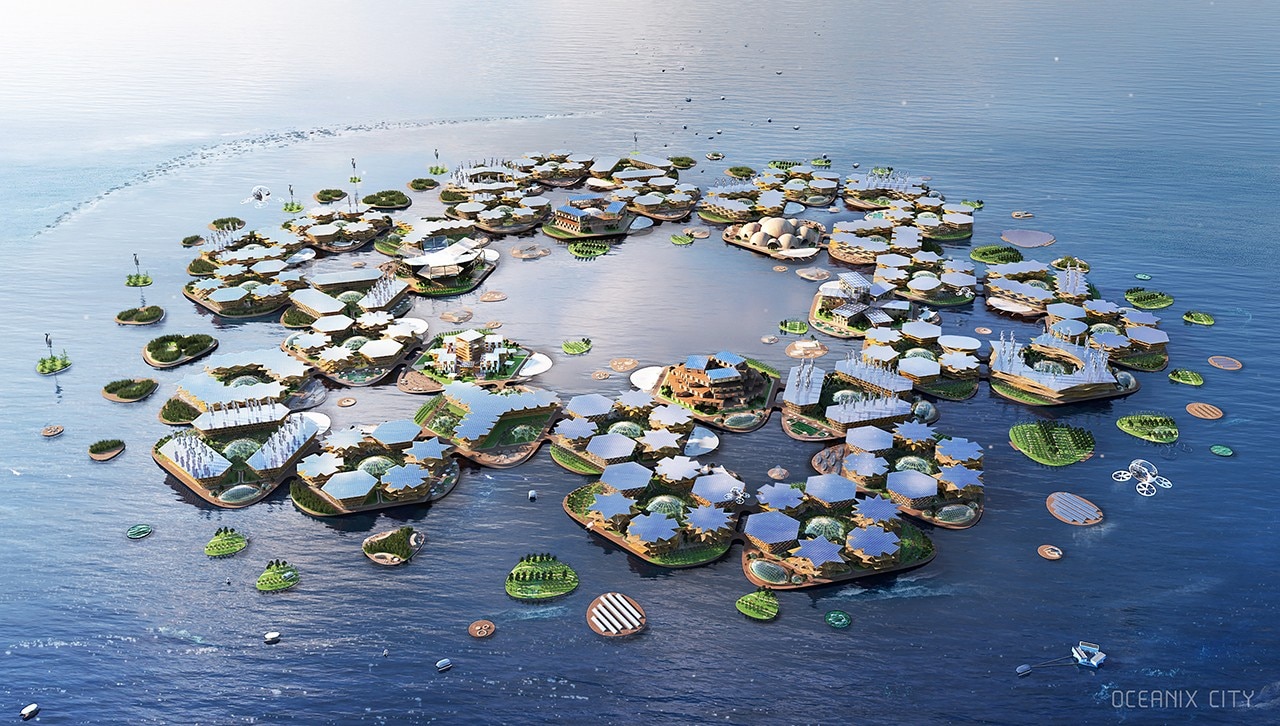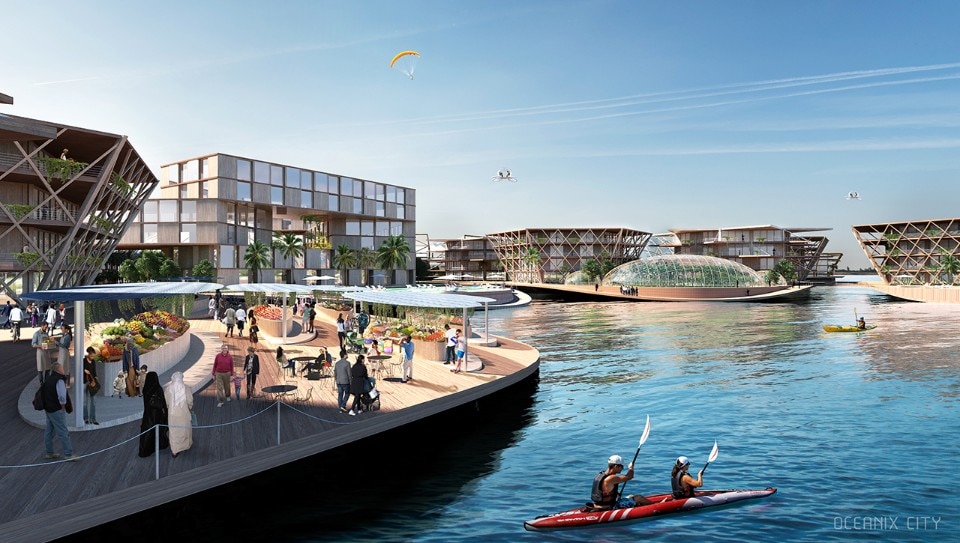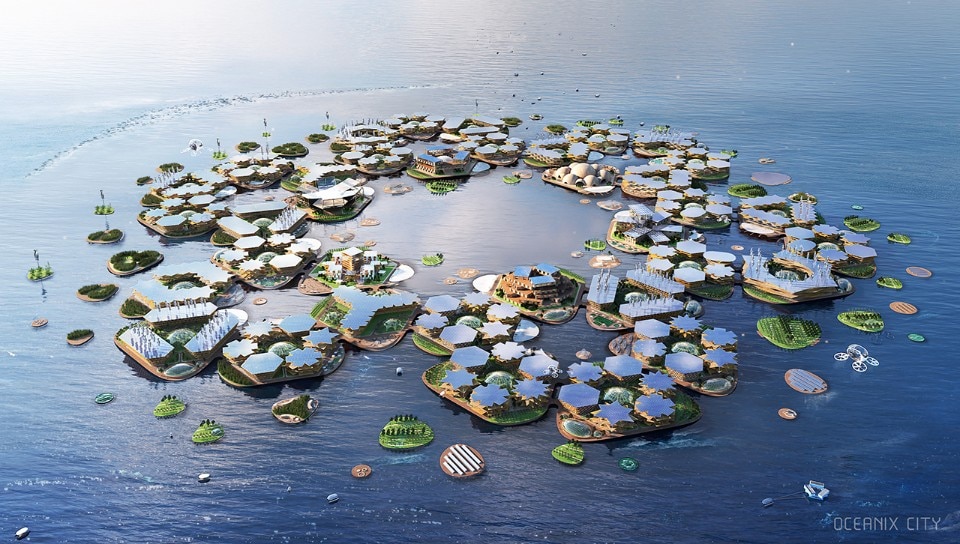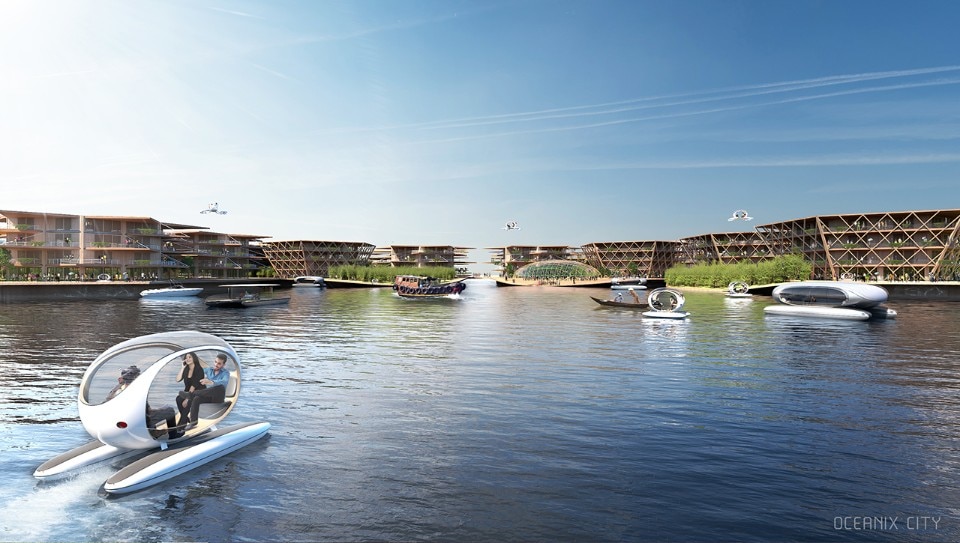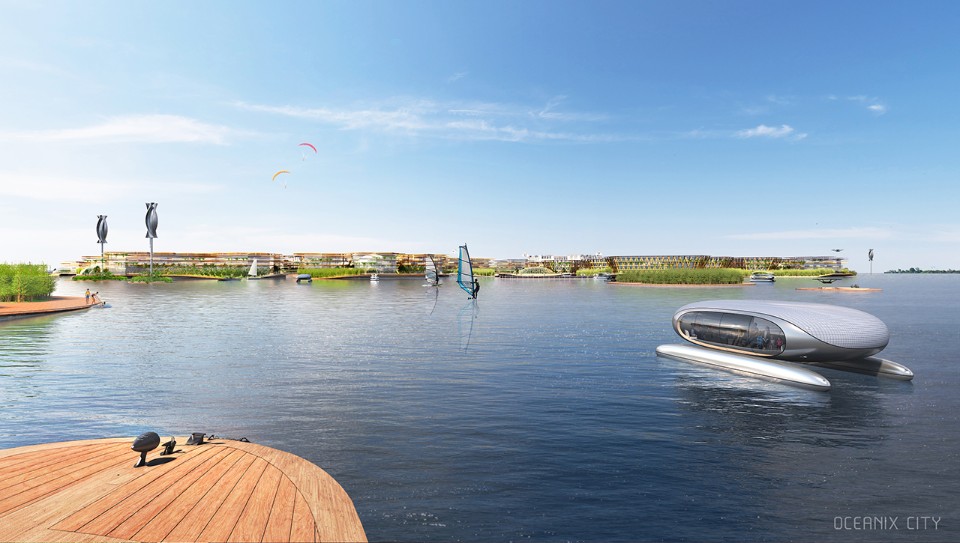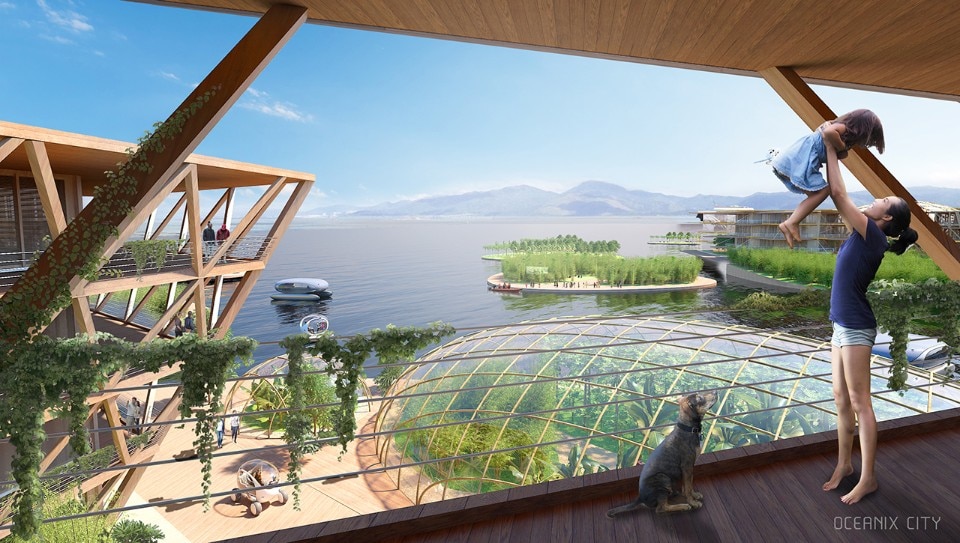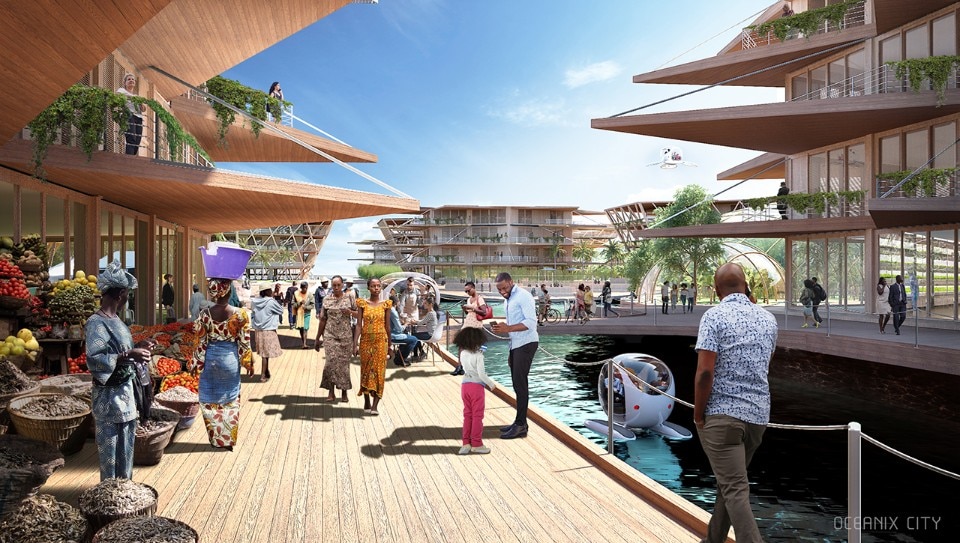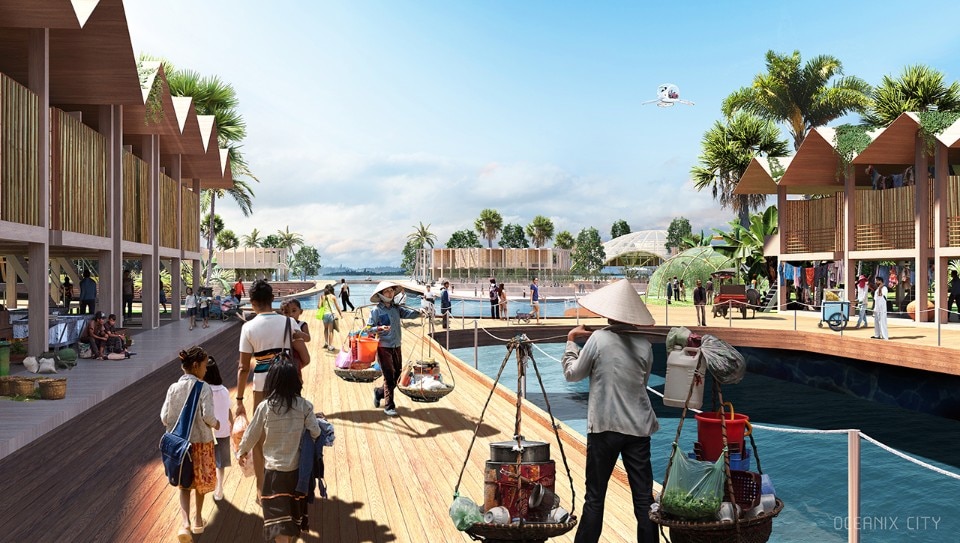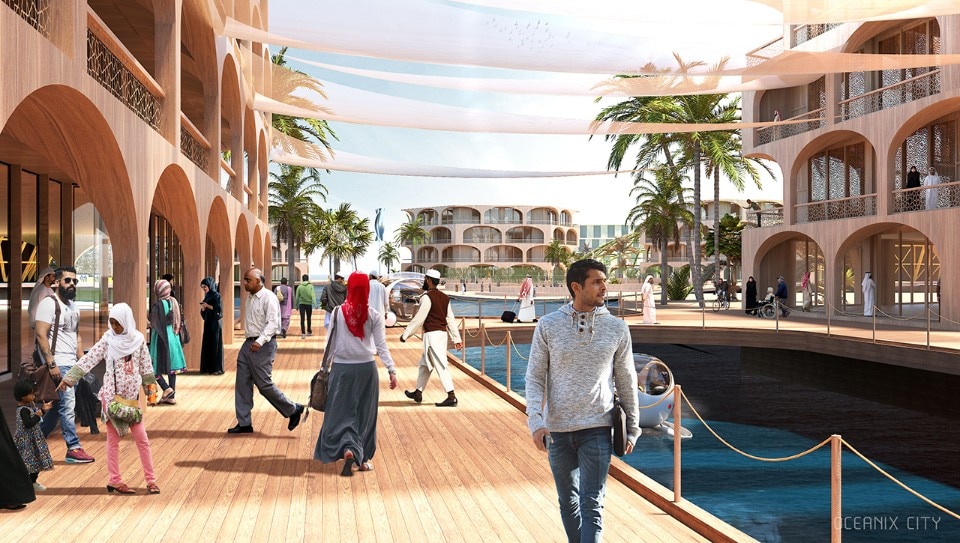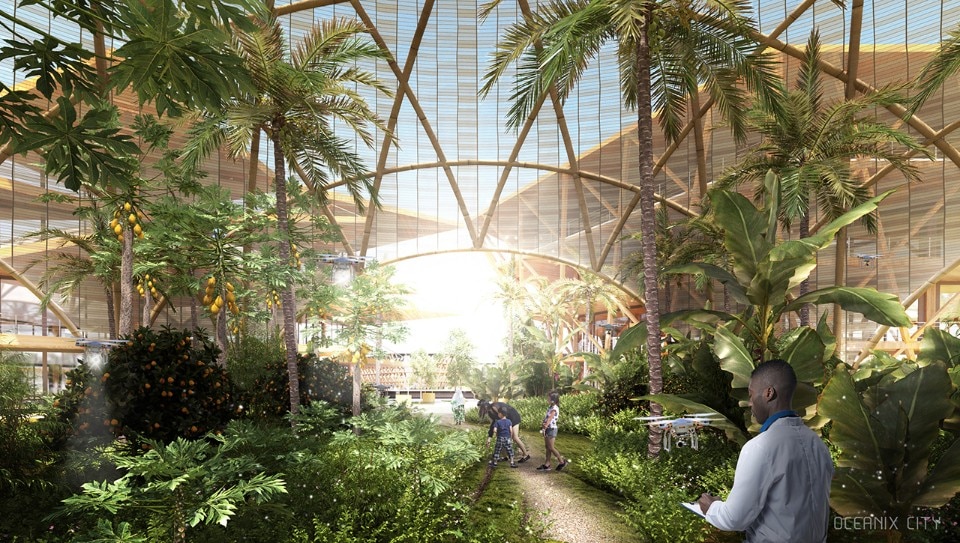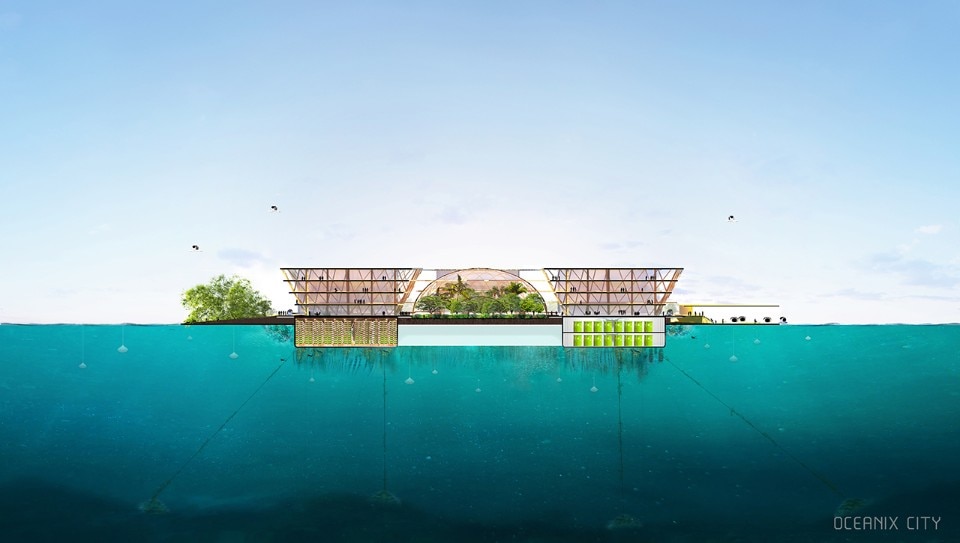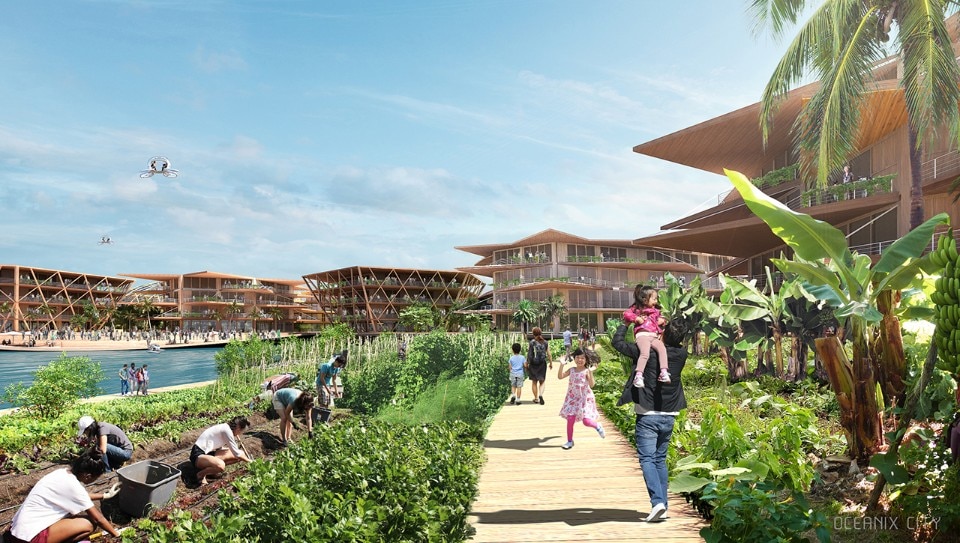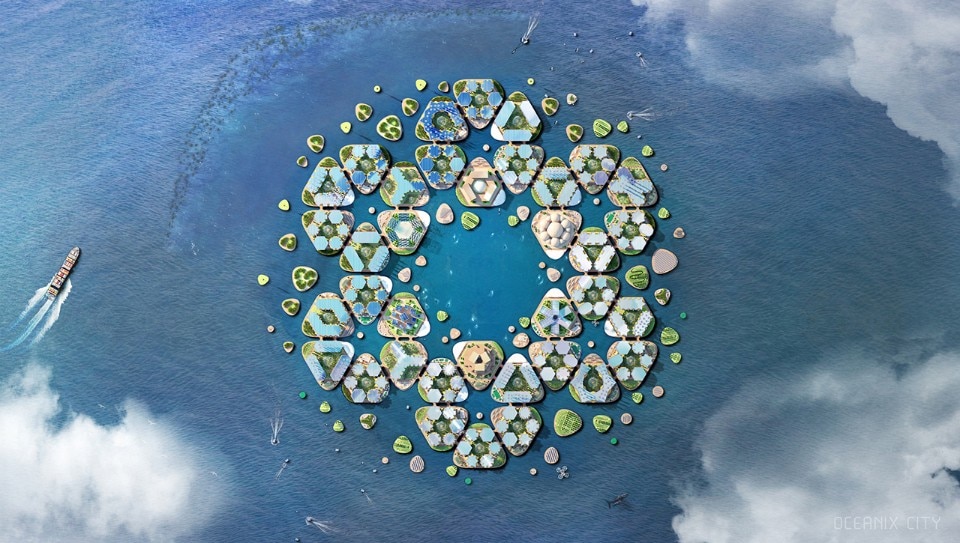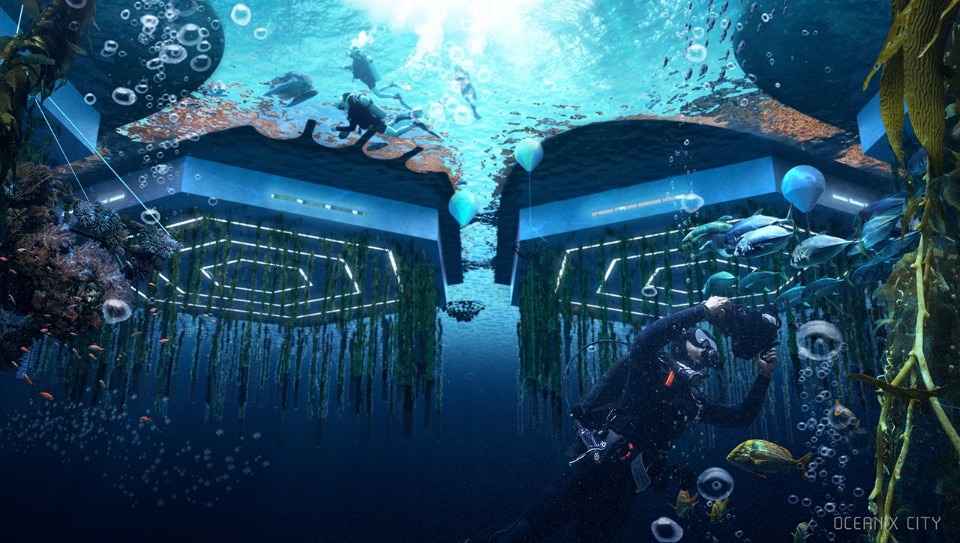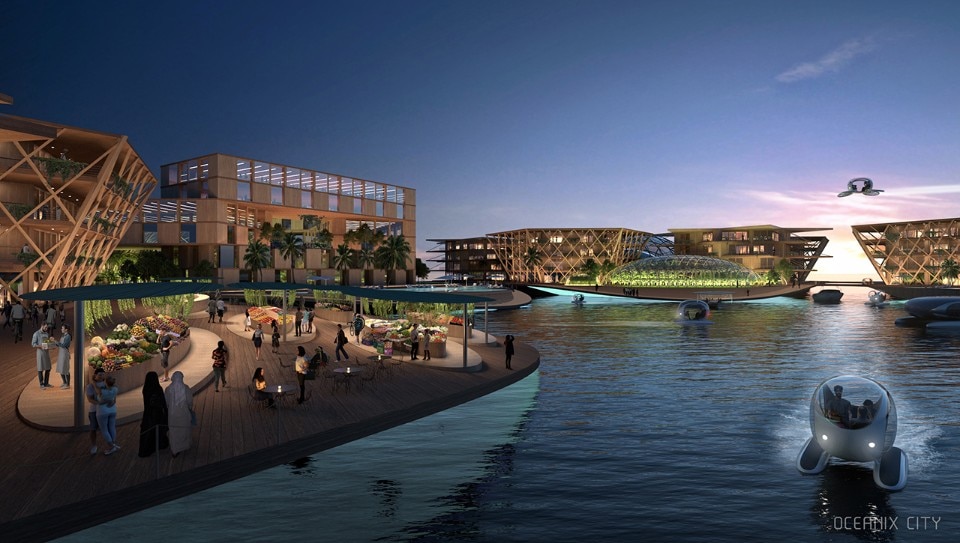In New York, UN-Habitat organised a day of meetings and debates to explore innovative solutions for cities threatened by rising sea levels. This was an opportunity to present The Oceanix City, a floating city conceived by a group of experts led by Bjarke Ingels.
If we think about urban projects designed on water, the first example that comes to mind is definitely Kenzo Tange’s legendary plan for Tokyo Bay. In response to the post-war demographic boom in the Japanese capital, the architect proposes a metabolist infrastructure capable of accommodating another 5 million people. Unfortunately (or fortunately) Tange’s vision has never been accomplished and it remains today a utopia celebrated by academics all over the world.

If we consider instead cities actually built on water, we immediately look at those islands in Dubai reproducing the world' s shape. Spectacular process of real estate speculation, these islands take advantage of portions of the earth's surface that until recently only utopian projects had thought to occupy (in other contexts and with very different purposes).
In order to face the drastic changes due to climate change, it seems that floating cities can be a real alternative to urbanisation along the coasts, which are increasingly subject to environmental catastrophes. Floating settlements propose lighter, more flexible, sustainable, and more adaptive patterns. In recent years we have seen proposals and visions of this kind bloom in all magazines - specialised and otherwise - the latest of which is the one designed by BIG.
“Nine out of 10 of the world’s largest cities will be exposed to rising seas by 2050,” said Bjarke Ingels during a recent roundtable discussion organised in New York by UN-Habitat. The paradigm city proposed by his studio is zero-waste, energy-positive and self-sustaining, as well as multicultural and accessible to all. The images spread promise a happy future and certainly “resilient”: urban gardens and fruit stands, drones, water scooters and windsurfing (but with what wind?).
How can such a jumble of stereotypes – written and rendered – convince us that the project presented by BIG is not different from another real estate operation?
Who can guarantee that these floating cities will not become yet another enclave for the rich?
In the article “Stop seeing climate change as an opportunity for architecture”, published by the online platform Failed Architecture, writer and editor Joshua McWhirter precisely dismantles the rhetoric of BIG, whose project The Big U passes off its resilient model as a tool for the economic enhancement of Lower Manhattan.
“The plan wishes to have its cake and eat it too: to mitigate storm damage, while also spurring economic growth with the addition of highly-coveted public space, funded, in part, with private dollars,” writes McWhirter.
The smiling utopia that BIG offers us does not deny the fact that even the effects of climate change will be unfairly distributed, affecting especially the poorer classes and the populations of the Global South, while a lucky few will continue not to worry about having to change their lifestyle.
Furthermore, we cannot allow such a complex issue as climate change to be reduced to banality and advertising image.
The Oceanix City project has the opposite effect to the concept of Hyperobjects, which the English philosopher Timothy Morton conceived to represent the intricacies of phenomena such as global warming: “These are entities of vast temporal and spatial dimensions which go beyond the human capacity for conception and serve as a profound and radical instrument for reflection and for learning to live with global warming and related matters.”
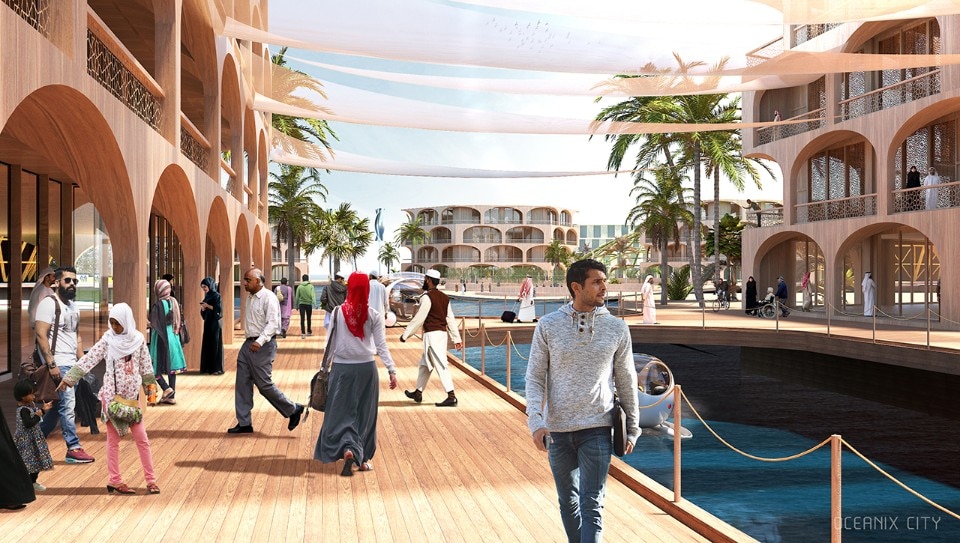
Projects, or visions, such as this one should stimulate us to address the issue in a problematic, critical and profound way. Instead of simplified images, we would prefer to receive diagrams and demonstrations that tell the story of a complex operation like the one proposed.
We need this, in addition to essential messages, perhaps naive, but resolute and able to give us determination, such as the signs of the million and a half young people who took to the streets on 15 March 2019 in hundreds of cities around the world to require a systemic change, which must be radical and sudden.


